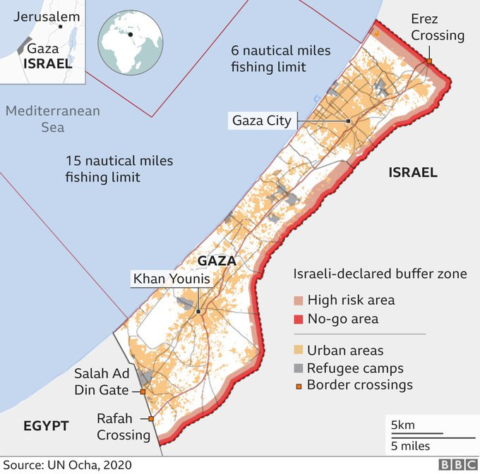Overly Sarcastic Productions
Published 23 Jun 2023Every castle tells a story, but when one small country has over 600 castles, the collective story they tell is something like “holy heck ouch, ow, oh god, why are there so many arrows, ouch, good lord ow” – And that’s Wales for you.
(more…)
October 15, 2023
History Summarized: The Castles of Wales
QotD: The two eras of Jazz
In many ways, and for many people, jazz ended in the early Sixties, when Ornette Coleman, John Coltrane and Cecil Taylor suddenly became the avant-garde; in fact, almost everything that has happened to jazz in the last 50 years could be called “post-Coltrane” in much the same way that people use “postmodern”. Obviously, jazz was “free” and difficult (mad-looking Belgians with crazy hair, billowing luminescent smocks and angular, clarinet-looking instruments) or else it was nostalgic (Harry Connick Jr et al). Ironically, for a type of music so obsessed with modern and the “now”, jazz has always been preoccupied with the past, so much so that during the Eighties and Nineties it became less and less able to reflect modern culture. Everyone wanted to sound like Miles or Dizzy; either that or they went fusion mad and ended up sounding and looking like Frank Zappa on steroids.
Dylan Jones, “The 100 best jazz albums you need in your collection”, GQ, 2019-08-25.
October 14, 2023
Lessons the Israelis must learn from the Hamas attacks
CDR Salamander finishes off his short series on the Hamas terror attacks on southern Israel last week by highlighting some of the things the Israeli military and intelligence organizations must take away from the failure to anticipate and parry or repel the attackers:
- Complacency Born from Excellence:
Israel is one of the richest, most educated and advanced societies on the planet. Their social capital is almost unmatched. Gaza is one of the poorest, miseducated, and dependent societies on the planet. On paper, one would think there would be no way what happened over the weekend could have happened. No, belay my last. I can very much see this scenario being on paper — and probably was — but it was not “the paper” that drove policy. The overconfident and optimistic won the argument. Like in 1973, if you spend most of your brief talking about how great you are and discussing how weak your opponent is, you might be missing something … or a lot of things.
- Technology Briefs Better Than it Performs:
How many times must this be learned? High tech solutions to human problems brief well when not properly cross examined or wargamed by skeptics. Tech seems clean, effective, and affordable — but it is not robust outside its planning assumptions. They work wonderfully in narrowly scoped vignettes, and not much more. Remote control machine guns on towers seem much more exciting than soldiers on patrol in an APC … but which one is more resilient to the unexpected? There is always compromise and risk. Sometimes well meaning and smart people make the wrong call.
- Coddling Useful Idiots is a False Economy:
In times of peace when facing very ugly truths, it is human nature to a large percentage of the population to defer to emotion, desire, and aspiration as opposed to reason, reality, and capabilities. It is easy to project your best intentions and world view on your enemy in the hope that their motivations are the same as yours. The fact remains, well meaning people can be wrong. Hate is irrational and as such, immune to reason. Well meaning but wrong people cannot be allowed to drive policy when there is no backup plan.
- Doomsday Cults Sometimes Take Over Entire Cultures:
Two people or two million people can become part of and enablers to a death cult. Humans are capable of the most wonderful things, and the most horrible things. This duality of mankind is what brought us to our advanced stage of civilization. When these death cults are closer to two million than two — more Hamas than Heaven’s Gate — you need to be prepared to respond in what ever way removes that threat should it cross over in to your reason-based society. They cannot be ignored. They grow until they take a nap to Hale-Bopp or fly in to a music festival.
- Evil Waits While Good is Impatient and Forgetful:
A free people can get distracted by their own pursuits that can only exist in a free society. Evil is hard to counter, uncomfortable to think about, and easy to avert your eyes when it is “over there” and forgotten and not “in here” trying to kick in the door. Too many people will make excuses, and ask you to accept their excuses, to avoid the unending and hard work of keeping evil away. Evil will exist always, the key is to not just keep it contained but to make sure it is small, isolated, and socially unacceptable. If you don’t do the last two, the first one will grow.
- F=MA:
How hard have you actually wargamed your defenses? In hindsight it is easy to second guess the border around Gaza, but at some time there had to be someone warning it was not enough. If you can run a bulldozer through a wall, it isn’t a wall — it is an aspiration. That, I hope, will be part of the post-war investigation.
There is the quick look so far this Thursday. In that Top-6 there are lessons for every nation to hoist onboard — especially the U.S.A.
In his Friday Q&A, Severian answers a question about what Hamas expected to gain from launching these attacks:
Which brings us, at long last, to Hamas. I too am baffled by this, because it seems so very Tet-like. NOT that the Mullahs are trying to “get rid of” their version of the Viet Cong, as the question suggests, but because it really seems like a big mistake. Bare minimum, it reveals the catastrophic failure of Israeli / AINO intelligence. If they have an ounce of Seriousness left anywhere in their government, they will have to massively clean house. Which would be terrible for Hamas – the guys who were asleep at the switch, allowing huge shipments of first-rate arms and etc. to be smuggled into Gaza, are now wide awake.
Same deal with training and financing. As incompetent as the Intel services were, I’m pretty sure even they would’ve noticed that hey, the Gaza Hang Gliding Club sure has a lot of new members! Where in Gaza could they possibly have practiced this stuff? It’s a sophisticated operation that betrays high levels of strategic and tactical coordination, with well-trained commandos doing something really innovative. I mean, parasailing? That’s some Otto Skorzeny shit right there. Whether or not Hamas dreamed it up on their own, or they had help with the operational concept, they surely had to train somewhere other than Gaza. Now, where could that possibly be?
You don’t roll the dice that way unless you really think you’ve got a strong chance of winning. But … win what? Unless they seriously thought Hamas could defeat the Israeli Army straight up … which, maybe they did. History’s full of that kind of thing. The Japanese at Pearl Harbor. Hitler in the Ardennes. America ended up beating those guys, so it’s ok to acknowledge that they made dumb mistakes based entirely on wishcasting. But Ho won, so it was brilliant 4D chess. Something similar might be happening here. It’s not very satisfying, but … there it is. We’ll have to wait and see.
Why Did the Vietnam War Break Out?
Real Time History
Published 10 Oct 2023In 1965, US troops officially landed in Vietnam, but American involvement in the ongoing conflict between the Communist North and the anti-Communist South had started more than a decade earlier. So, why did the US-Vietnam War break out in the first place?
(more…)
A Jacobite spy for Bonnie Prince Charlie
In the latest Age of Invention newsletter, Anton Howes talks about the career of John Holker of Manchester, cloth manufacturer, who joined the army of Prince Charles Edward Stewart in 1745, and eventually became an expert in industrial espionage:

Prince Charles Edward Stuart, 1720 – 1788. Eldest Son of Prince James Francis Edward Stuart.
Portrait by Allan Ramsay, National Galleries Scotland via Wikimedia Commons.
I’ve lately been reading about one of history’s greatest spies — not a James Bond-like agent with licence to kill, but a master of industrial espionage, John Holker.1
Holker was originally from Manchester, in Lancashire, where he was a skilled cloth manufacturer in the early eighteenth century, his specialty being calendering — a finishing process to give cloth a kind of sheen or glazed effect. But Holker was also a Catholic and a Jacobite — a believer in the claim of the Catholic descendants of the deposed king James II to be the rightful rulers of Great Britain, instead of the Hanoverian George I and George II who had only succeeded to the throne because they were Protestants. In 1745 James II’s grandson Charles, also known as Bonnie Prince Charlie — likely the “Bonnie” who lies over the ocean in the famous song — landed in the Scottish Highlands and raised the royal standard. Charles’s uprising defeated the British troops stationed in Scotland, captured Edinburgh, and then marched down the west coast of England, capturing Carlisle and entering Lancashire.
To Holker, who had been born in the same year as the last Jacobite rebellion in 1719, the arrival of Charles in Manchester must have seemed like a once-in-a-generation opportunity. He and his business partner instantly joined Charles’s troops and he was appointed a lieutenant. But Manchester was the last place to provide many eager volunteers for the uprising, and when Charles reached Derby he lost heart and turned around. Holker and his business partner ended up being left to garrison Carlisle as Charles and his force retreated into Scotland to hunker down, and they were soon captured by the British troops sent to quash the uprising. They were then, as officers, sent to Newgate prison in London to sit with their legs bound in irons and await trial and certain execution.
But they never made it to trial. In the first demonstration of Holker’s extraordinary talent for espionage, they escaped. Holker had been allowed visitors in prison, so had drawn on London’s crypto-Jacobite circle to smuggle in files, ropes, and information about the prison and its surroundings. They managed to file through the leg-irons and window bars, climbed up the gutters onto the prison roof, and then used planks from the cell’s tabletop to cross onto the roof of a nearby house. In the event, they disturbed a dog guarding the house, and so Holker hid in a water-butt and became separated from the others. He eventually found refuge at a crypto-Jacobite’s house, then escaped into the countryside before managing to make his way to France.
In France, Holker joined his fellow veterans of the failed uprising of ‘45, becoming a lieutenant in a Jacobite regiment of the French army. He fought for the French in the Austrian Netherlands — present-day Belgium — against the Hapsburgs, the Hanoverians, the Dutch, and the British. Even more extraordinary, however, was that when Bonnie Prince Charlie wanted to go in secret to England in 1750, it was Holker who went with him as his sole companion and guide. Although Charles failed to persuade his supporters in England to rise up in rebellion on their own, Holker managed to get the prince secretly and safely to London and back.
By the time Holker reached his early thirties he had been an industrialist, rebel, prisoner, fugitive, soldier, undercover agent, and even spy-catcher: he successfully identified a spy for the British in Charles’s circle, even if Charles failed to heed his warning. But in 1751 Holker’s career took yet another turn when he was recruited by the French government as an industrial spymaster.
Holker’s chief task was to steal British textile technologies.
1. Unless otherwise stated, I’ve drawn much of my information on Holker and the industries that the French attempted to copy from John R. Harris, Industrial Espionage and Technology Transfer: Britain and France in the 18th Century (Taylor & Francis, 2017), particularly chapter 3.
Ray Manzarek – “Riders On The Storm”
EliasIak2011
Published 30 Nov 2012“The Doors: Mr. Mojo Risin’ — The Story of LA Woman“
QotD: Horses and sheep on the Eurasian Steppe
Now just because this subsistence system is built around the horse doesn’t mean it is entirely made up by horses. Even once domesticated, horses aren’t very efficient animals to raise for food. They take too long to gestate (almost a year) and too long to come to maturity (technically a horse can breed at 18 months, but savvy breeders generally avoid breeding horses under three years – and the Mongols were savvy horse breeders). The next most important animal, by far is the sheep. Sheep are one of the oldest domesticated animals (c. 10,000 BC!) and sheep-herding was practiced on the steppe even before the domestication of the horse. Steppe nomads will herd other animals – goats, yaks, cattle – but the core of the subsistence system is focused on these two animals: horses and sheep. Sheep provide all sorts of useful advantages. Like horses, they survive entirely off of the only resource the steppe has in abundance: grass. Sheep gestate for just five months and reach sexual maturity in just six months, which means a small herd of sheep can turn into a large herd of sheep fairly fast (important if you are intending to eat some of them!). Sheep produce meat, wool and (in the case of females) milk, the latter of which can be preserved by being made into cheese or yogurt (but not qumis, as it will curdle, unlike mare’s milk). They also provide lots of dung, which is useful as a heating fuel in the treeless steppe. Essentially, sheep provide a complete survival package for the herder and conveniently, made be herded on foot with low manpower demands.
Now it is worth noting right now that Steppe Nomads have, in essence, two conjoined subsistence systems: there is one system for when they are with their herds and another for purely military movements. Not only the sheep, but also the carts (which are used to move the yurt – the Mongols would call it a ger – the portable structure they live in) can’t move nearly as fast as a Steppe warrior on horseback can. So for swift operational movements – raids, campaigns and so on – the warriors would range out from their camps (and I mean range – often we’re talking about hundreds of miles) to strike a target, leaving the non-warriors (which is to say, women, children and the elderly) back at the camp handling the sheep. For strategic movements, as I understand it, the camps and sheep herds might function as a sort of mobile logistics base that the warriors could operate from. We’ll talk about that in just a moment.
So what is the nomadic diet like? Surely it’s all raw horse-meat straight off of the bone, right? Obviously, no. The biggest part of the diet is dairy products. Mare’s and sheep’s milk could be drunk as milk; mare’s milk (but not sheep’s milk) could also be fermented into what the Mongolians call airag but is more commonly known as qumis after its Turkish name (note that while I am mostly using the Mongols as my source model for this, Turkic Steppe nomads are functioning in pretty much all of the same ways, often merely with different words for what are substantially the same things). But it could also be made into cheese and yogurt [update: Wayne Lee (@MilHist_Lee) notes that mare’s milk cannot be made into yogurt, so the yogurt here would be made from sheep’s milk – further stressing the importance of sheep!] which kept better, or even dried into a powdered form called qurut which could then be remixed with water and boiled to be drunk when it was needed […] The availability of fresh dairy products was seasonal in much of the steppe; winter snows would make the grass scarce and reduce the food intake of the animals, which in turn reduced their milk production. Thus the value of creating preserved, longer-lasting products.
Of course they did also eat meat, particularly in winter when the dairy products became scarce. Mutton (sheep meat) is by far largest contributor here, but if a horse or oxen or any other animal died or was too old or weak for use, it would be butchered (my understanding is that these days, there is a lot more cattle in Mongolia, but the sources strongly indicate that mutton was the standard Mongolian meat of the pre-modern period). Fresh meat was generally made into soup called shulen (often with millet that might be obtained by trade or raiding with sedentary peoples or even grown on some parts of the steppe) not eaten raw off of the bone. One of our sources, William of Rubruck, observed how a single sheep might feed 50-100 men in the form of mutton soup. Excess meat was dried or made into sausages. On the move, meat could be placed between the rider’s saddle and the horse’s back – the frequent compression of riding, combined with the salinity of the horse’s sweat would produce a dried, salted jerky that would keep for a very long time.
(This “saddle jerky” seems to gross out my students every time we discuss the Steppe logistics system, which amuses me greatly.)
Now, to be clear, Steppe peoples absolutely would eat horse meat, make certain things out of horsehair, and tan horse hides. But horses were also valuable, militarily useful and slow to breed. For reasons we’ll get into a moment, each adult male, if he wanted to be of any use, needed several (at least five). Steppe nomads who found themselves without horses (and other herds, but the horses are crucial for defending the non-horse herds) was likely to get pushed into the marginal forest land to the north of the steppe. While the way of life for the “forest people” had its benefits, it is hard not to notice that forest dwellers who, through military success, gained horses and herds struck out as steppe nomads, while steppe nomads who lost their horses became forest dwellers by last resort (Ratchnevsky, op. cit., 5-7). Evidently, being stuck as one of the “forest people” was less than ideal. In short, horses were valuable, they were the necessary gateway into steppe life and also a scarce resource not to be squandered. All of which is to say, while the Mongols and other Steppe peoples ate horse, they weren’t raising horses for the slaughter, but mostly eating horses that were too old, or were superfluous stallions, or had become injured or lame. It is fairly clear that there were never quite enough good horses to go around.
Bret Devereaux, “That Dothraki Horde, Part II: Subsistence on the Hoof”, A Collection of Unmitigated Pedantry, 2020-12-11.
October 13, 2023
Elvira, the Party Girl Double Agent
World War Two
Published 11 Oct 2023She’s the gambler with a hotline to the Abwehr. The party girl tearing up the London social scene. Now she’s doing her bit to hold back the Panzer divisions and pave the way for D-Day. This is the story of Elvira Concepcion Josefina de la Fuente Chaudoir, Double Cross’s most flamboyant double agent.
(more…)
Gewehr 43
Forgotten Weapons
Published 13 Oct 2013German ordnance began looking for a military self-loading rifle to augment the K98k as early as the 1930s, although the pressures of war initially made that development a second priority. By 1941, though, two competing designs from the Walther and Mauser companies had been developed to the point of mass production, as the Gewehr 41(W) and Gewehr 41(M) rifles. These both shared a gas-trap operating system to comply with an HWa requirement that no gas ports be drilled into the barrels. When it came to locking systems, the two designs differed greatly, with the Walther being the more successful of the two. Thousands of examples of both designs were put into field testing, mostly in the East, and it became clear that the gas-trap system was not suitable for combat. The Walther company responded with a new version of their design which used a much more modern short-stroke gas piston, basically copied from the Soviet SVT-40 rifle.
The G43 was very quickly recognized as a significant improvement over the G41(W), and was very quickly put into production, with approximately 400,000 being manufactured by the end of the war. Well, I found an example of the G43 that I could shoot (thank you, Mike) and took it out for some video …
(more…)
QotD: Sales of George Orwell’s Nineteen Eighty-Four
Nineteen Eighty-Four remains widely read today — and ubiquitously quoted and cited. In fact, during the spring of 2017, in the wake of the inauguration of President Donald Trump — and controversies about the “alternative facts” that his aides marshaled as evidence of record attendance figures at the event — the book achieved the remarkable, unprecedented feat of skyrocketing to number one on fiction bestseller lists. This occurred an astonishing 67 years after its original date of release. Nothing of this kind had ever happened to another book in publishing history. And, in the case of Nineteen Eighty-Four, it was the fourth time that it had topped the bestseller lists: first in 1954, in the U.K., after a BBC-TV adaptation sent sales soaring; second, throughout the English-speaking world during the so-called countdown to 1984 between October 1983 and April 1984; and third, in 2003, as the centennial commemorations of Orwell’s birth dominated the headlines and airwaves on both sides of the Atlantic.
In fact, it is fair to say that Nineteen Eighty-Four has never not been a bestseller and a publishing phenomenon. According to the website Ranker.com, the work has sold more than 25 million copies since 1949. More than a half century later, Manchester Guardian readers voted Nineteen Eighty-Four the most influential book of the 20th century. Waterstone’s, a British bookstore chain, has ranked Orwell’s dystopia as the second most popular book of the 20th century (behind J.R.R. Tolkien’s The Lord of the Rings). That is an amazing feat in its own right, given that most people understandably do not particularly enjoy reading (let alone rereading) nightmarish stories of torture, betrayal, and brainwashing. The book’s ascent to the top of fiction bestseller lists in 2016 and 2017, along with the ceaseless invocation of Orwell’s catchwords to characterize the Trump administration, induced Signet, Orwell’s American publisher, to rush out a new print run of 500,000 copies. Expectations are that total sales will pass 30 million by the time of the 2020 election in the United States.
John Rodden and John Rossi, “George Orwell Warned Us, But Was Anyone Listening?”, The American Conservative, 2019-10-02.
October 12, 2023
Considering Israel’s potential courses of action in Gaza
CDR Salamander puts on his Operational Planning hat and sifts through what Israel may decide to do in light of open source information from Israeli and other sources:
This isn’t going to make anyone happy. It doesn’t matter if you are on the “cease fire and de-escalate” left or the “Linebacker III” right — none of my COAs will be quite what you are looking for … though the Linebacker III crowd might be OK with COA-B and COA-C … but I’m getting ahead of myself.
Cut this ‘ole Operational Planner some slack, and a few caveats:
- I’ve had to rewrite 85% of this from its first draft over the weekend as we now have Commander’s Intent (CI) and higher Direction and Guidance (D&G). That had me discard two of my three Courses of Action (COA).
- I am quite sure the Israeli Defense Forces had appropriate draft Operational Plans (OPLANS) on the shelf with all sorts of Branch Plans and Sequels waiting to be updated and providing enough once dusted off to get things in to Phase I.
- I don’t have a Planning Staff or even a Core Planning Group, intel support, or even some Italian colleagues to remind me to take my 10:00 and 15:00 coffee breaks, but I’ll do my best anyway. As anyone in crisis response planning can tell you — as opposed to advanced plans types — you have to be comfortable enough to accept that you don’t have enough time, staff, or information to produce a great OPLAN, but you’ll come up with a good enough plan anyway. You’re happy to be wrong about a detail or two, and are open-minded enough, secure in your ego, and content to change what you thought was perfect — some or all of your plan — the moment you get better information, changes in CI or D&G, or the situation develops in unexpected ways … as they do.
- If you are looking for a detailed Tactical OPLAN or a sweeping Strategic OPLAN, you’re at the wrong substack. I’m an Operational Planner and what I am about to do is an “elevator speech” level Preliminary COA Decision Brief with the principals (J2, J3, J4, J5, and the Chief of Staff) where they get to weigh in and refine what the Planning Group I am the Chair of has produced (OK, I’m a Planning Group of one and I made myself Chair … I don’t care, it’s going on my FITREP anyway). Following the Principals’ input — especially from the Chief of Staff who has had better one on one time with the Commander and as such has the nuance no one else does — I’ll beg for a day and will be told I have two hours to make changes and then well brief the Commander.
Working from open-source information, we have CI and D&G from the Prime Minister and the Minister for Defense.
If you go to YouTube you can get the script, but we’ll use this statement from the weekend as a close approximation of POLMIL-level guidance from Prime Minister Netanyahu;
As a Planning Staff, what do I need to take away from this?
- Israel is at war.
- Israel will finish it.
- We will exact a price that will be remembered by them (Hamas) and Israel’s other enemies for decades to come.
From Defense Minister Yoav Gallant we have:
- Gaza won’t return to what it was before.
- We started the offensive from the air, later will also from the ground, and that’s how it will end.
- Gaza will never return to what it was.
Like I said … that had me ditch two of the my three COA from this weekend. If you wanted to know how it shifted, my most dovish COA is gone, and my most harsh COA is now the center of my Overton Window. A planner must try to align with CI and D&G as it is understood — not how he wishes it to be.
Canada, “a country with short arms and long pockets”
In the National Post, John Ivison recounts Canada’s continuing inability to live up to expectations internationally, especially militarily:
On the eve of Russia’s invasion of Ukraine, Mark Norman, the former vice-chief of defence, made a prediction that sounded overblown at the time.
“I really think the Americans are going to start ignoring us because they don’t think we are credible or reliable. They are not even putting pressure on us anymore,” he said in a January 2022 National Post interview, based on his conversations with contacts in Washington.
It turns out he was absolutely right.
Since then, leaked Pentagon documents have confirmed that sense, indicating that the U.S. believes “widespread defence shortfalls have hindered Canada’s capabilities, while straining partner relationships and alliance contributions”.
Canada left little room for doubt about its diminished capabilities when it took a pass on NATO’s largest-ever air exercise last summer, because its jets and pilots were involved in “modernization activities”. That absence left the impression that this country might not be able to show up in certain circumstances.
Even before the unfolding tragedy in the Middle East, America was letting it be known that it felt overstretched and needed regional allies to share the burden.
When President Joe Biden visited Ottawa in March, he asked Justin Trudeau to lead a mission to Haiti, which had descended into mob rule. Since the Liberals were elected on a peacekeeping ticket in 2015, it was a logical request. However, Trudeau demurred, presumably on the grounds that Canada’s security forces were stretched too thin by operations in Latvia and fighting wildfires at home. The upshot is that Kenya is set to send 1,000 security officers to the beleaguered island nation.
The recent news that Canada now plans to trim its defence budget by nearly $1 billion — a total of $17 billion over 20 years, if savings are recurring — has reinforced the image of a country with short arms and long pockets.
Against that background, it was no surprise that on Monday Biden hosted a call with the leaders of France, Germany, Italy and the U.K. to discuss the crisis in the Middle East — and didn’t include Canada.
A statement by the G7 minus Canada and Japan (which has a negligible Jewish population) was issued saying that the five countries would ensure Israel is able to defend itself.
Over at The Line, Matt Gurney discovered that the federal government was actively trying to hide the fact that Canadians in Israel were not able to access Canadian embassy services by pretending that the word “operational” meant “open and functional”:
On Sunday evening (hours after we published our dispatch), I received a reply from GAC. This was the reply:
Since the beginning of this crisis, Canadian officials have been working around the clock to support Canadians. The missions in Tel Aviv and Ramallah remained operational through the weekend and will continue to be. Our missions will open on Monday October 9th, unless security conditions do not allow for it. We will be assessing the security situation daily, in coordination with our allies.
Okay! That seemed fair. But not having been born yesterday, and being in a profession where people try to spin me all the time, I noticed something immediately. The distinction GAC was drawing between “operational” and “open” stood out to me. I replied at once seeking clarification, and heard nothing back. Not even an acknowledgement.
This word choice mattered. The government publicly used the “operational” messaging. Members of the government repeated it. This was what they were telling the Canadian people: all is well, ignore those nasty media people and members of the opposition. Of course the embassies were “operational”!
See that tweet? The one pasted above? I checked out who was retweeting it. Lots of people did! And that included a bunch of Liberal MPs, a bunch of Canadian diplomats, members of the media, and what I’ll politely refer to as a group of “usual suspects” I recognize from online as being proxies for the Liberal government’s messaging (or at least really devoted True Believer Liberal partisans).
On Monday morning, having heard nothing back about what “operational” meant as opposed to “open”, I asked for a specific clarification in the terminology. What was “operational” vs. “open”? I also asked for specifics on what services were available locally from Canadian diplomatic missions in Israel over the weekend in real time, and how that would change when the embassy “opened” on Monday. I asked about the staffing level at the embassy on the weekend, and how that would compare to a normal workday, and also to a normal weekend.
Rather than answer a simple question, our government would much rather obfuscate and prevaricate as a matter of policy. That, by itself, tells you everything you need to know about both our political leaders and the civil service organizations they control.
It’s not mere “activism”, it’s “AAAAAH-ctivism”!
In The Critic, Charlotte Gill outlines the changes in activist tactics down to today’s utter hysterics on Every. Single. Issue.

“Just Stop Oil Activists Walking Up Whitehall” by Alisdare Hickson is licensed under CC BY-SA 2.0 .
“How many kids have to die?” were the apocalyptic words of a Just Stop Oil activist on Sky News last week. She grimaced and flung her hands out as she asked presenter Anna Jones, and others in the studio, what it would take for them to get involved in the fight against climate change. Would it be “until the water’s lapping at your ankles? Until your own kids haven’t got food?” Forget the British mantra to “keep calm and carry on”. Anyone watching would get the impression that the advice is now firmly to “PANIC!!”
Far from jumping on the nearest piece of furniture to protect myself from rising tides and who knows what else — sharks with Leave-Means-Leave-branded laser beams shooting from their heads, for example — I felt strangely immune to someone telling me the world’s going to end. Like the “boy who cried wolf”, there’s no shortage of middle-aged people ready to cry apocalypse. It’s no surprise one’s sensory reactions have resultantly dialled down a notch or two.
I only really noticed the rise of AAAAAH-ctivism this year, after covering the war on cars. Whenever I have defended the petrol proletariat — those punished every time they drive a car — I am struck by the increasing number of people telling me I don’t care about “CHILDREN’S LUNGS!!” or “PEOPLE DYING!!” Last month Wales introduced 20mph speed limits, which vast amounts of voters have objected to. The counterargument to any perfectly pragmatic concerns is always “SO YOU THINK SPEED IS MORE IMPORTANT THAN LIVES?!” It is quite an effective way to close down debate, portraying it as a matter of being for or against death.
It’s difficult to pinpoint exactly when AAAAAH-ctivism began. After all, fear mongering is nothing new in politics — one of the most disastrous examples being Tony Blair and George W. Bush’s “Weapons of Mass Destruction” claims that led the West into the Iraq War.
Following some quiet(ish) years in Blighty, the hyperbole ramped up around Brexit, when Labour MP David Lammy compared the pro-Leave European Research Group to the Nazis, as well as advocates of South African apartheid. Elsewhere, militant Remainers repeatedly warned of the Hard and Far Right being on the march. Writing for The Guardian in 2018, Michael Chessum set the tone when he warned, “We are living through a moment of encroaching darkness and nationalist resurgence.” Nowadays, you could say that the “darkness” looks more like a £6 salmon sandwich at Pret.
KAMIKAZE: HMS Formidable, May 4, 1945
Armoured Carriers
Published 18 Apr 2020It was the height of the invasion of Okinawa. Japan was throwing a last-ditch effort at unseating US Marines from their beachheads. Kamikazes swarmed the skies. HMS Formidable, part of the British Pacific Fleet interdicting attacks from Formosa (Taiwan), was to suffer a direct hit on her armoured flight deck. Here’s what happened — in the words of those who were there.
(more…)








